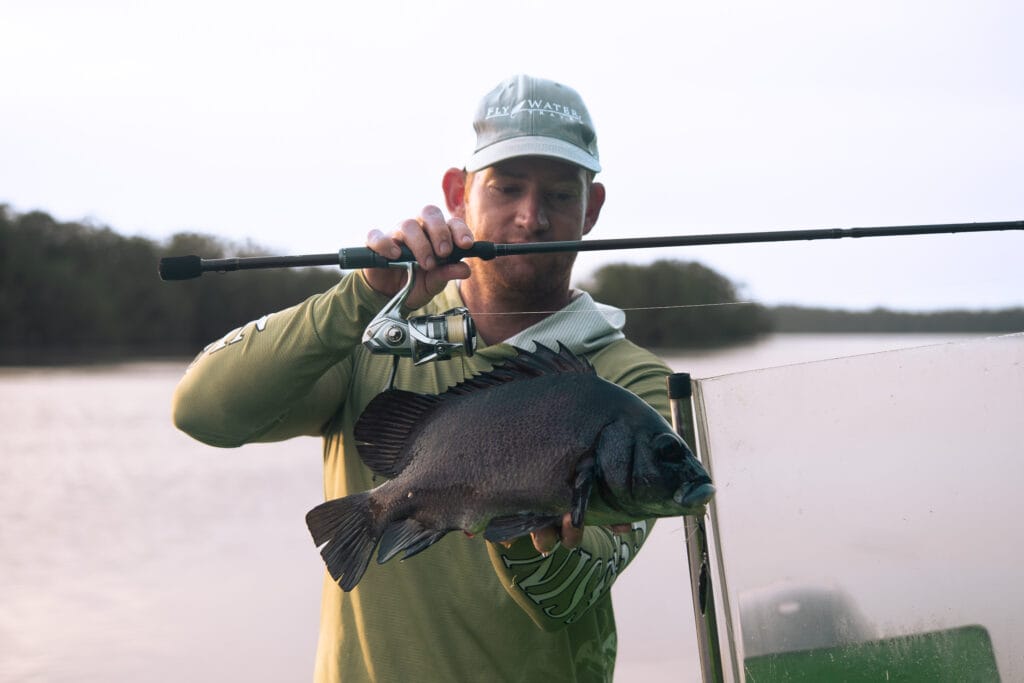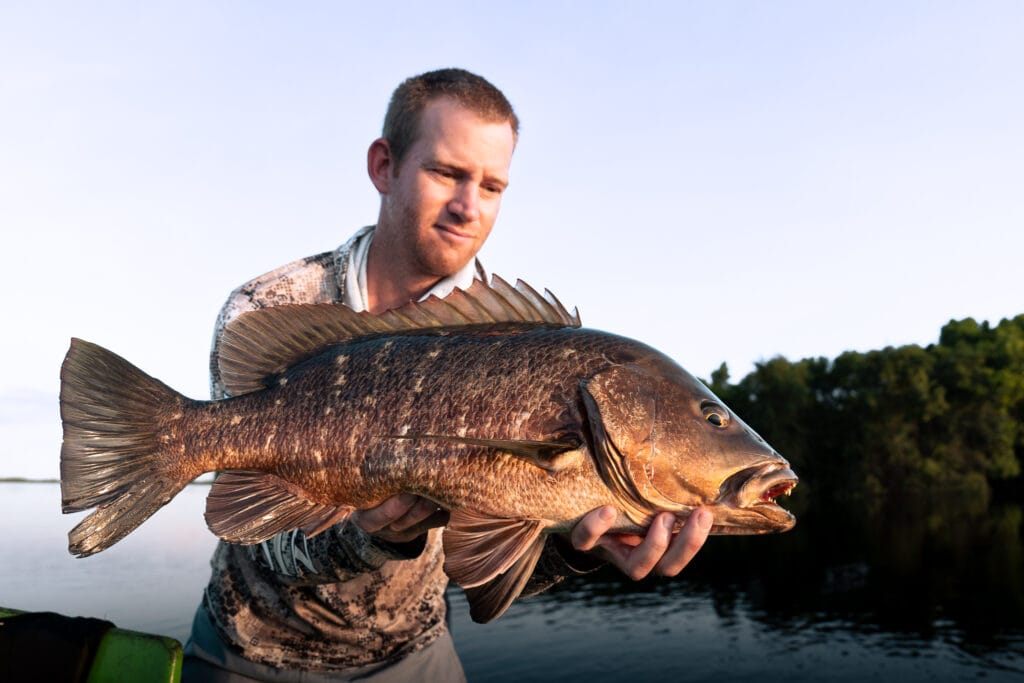The vast Ndogo lagoon system at Sette Cama holds massive sportfishing potential. At some 70,000 hectares it’s not surprising that anglers have barely begun to scratch the surface of this extraordinary eco-system. African Waters has been operating in Gabon for over a decade and has recently begun to explore the lagoon using micro jigs. The results have been nothing short of exceptional and on the back of this, four weeks have been set aside at the start of the 2023/24 season (which runs from September to April) specifically for exploration.
Although some time will be spent traditional lure and fly fishing at the mouth, the primary focus will be on exploring the extensive lagoon system and experimenting with new techniques.
Head guide, Ewan Kyle, describes the success of micro jigging so far:
So far, we have explored only a small percentage of the upper lagoon, which consists of over 360 islands. We have only just begun to see what is out there, and as soon as the sounders arrive and we are able to see the bottom structure in more detail and find the old canyons and pinnacles that should hold the fish, it will open up a new world of fishing opportunities.

Micro jig fishing is a style of fishing that involves using small, lightweight jigs to target a variety of fish species in deeper water. The jigs are typically between 10 to 30g and are worked in a vertical jigging motion, which involves lifting and dropping the jig through the water column. This technique is especially effective for targeting fish in structure-rich environments, where traditional lures may get snagged. Micro jig fishing is gaining popularity among anglers due to its versatility and effectiveness in catching a wide range of species.
Areas that produce only a few bites on the first drift or two with a paddletail consistently produce bites for many more drifts with the jigs, often yielding significantly bigger fish on the 15-20g jig than with the 5″ paddletails. It’s as if the big, clever fish recognize the paddletail is not good to eat but can’t resist the jig. It could be the action or speed, or just the size category, but something about the micro-jigs just works. As you are fishing with such a small lure and in relatively deep water, it is necessary to go pretty light on the braid and leader. I have been using 15lb braid and a 25lb fluoro leader, which you can still pull surprisingly hard, but of course, with many snapper in the six to eight kilogramme range and often in very horrible structure, you do lose a fair number.

I find it captivating to lift and drop the jig through the last 1.5m of water off the bottom, feeling my way over and through the structure. Often you will be drifting through an area feeling gravel and sand, and then you lift the jig and drop it, feeling it land on a rock that comes up a metre off the bottom. You know you are in the zone and the chances of a good bite are extremely high. The bite itself is also highly satisfying as it always happens on the drop, and often there is a small tap or tug on the line as the fish misses on the first swipe, then comes back with vigour for the second try as the lure returns. With relatively small, de-barbed single hooks, there is also very little damage to the fish, which is important. We have found areas where you can consistently get good-sized threadfin on the jigs, which in the past have been a difficult species to target in the lagoon and put up an excellent, clean fight on the light tackle.
Among species caught to date are:
Longfin jack
Brown snapper
Mangrove snapper
Guinean snapper
Cubera snapper
Tilapia
Banded jewel cichlid
Catfish
Guinean barracuda
Grunter
Springer/ladyfish
Giant African threadfin
Pursemouth
If you would like more information, or to join one of these exploratory weeks please contact Charlotte Chilcott or call us on ++44 1980 847389. Alternatively click HERE if you would like us to contact you.
